Where Anne Frank Wrote Her Diary
The Anne Frank House is a museum that shows the Frank family’s wartime hiding place. You can walk through the rooms and see the place where a young Jewish girl wrote her diary. The Anne Frank House is very popular and visited by over a million visitors every year. It is no good to turning up on the off chance as entry is by pre-booked tickets with a time slot only.
‘Our room looked very bare at first with nothing on the walls; but thanks to Daddy who had brought my film-star collection and picture postcards on beforehand, and with the aid of a paste pot and brush, I have transformed the walls into one gigantic picture. This makes it look much more cheerful’. Anne Frank, July 11th 1942
Anne Frank Guided Walk
The guided walks offered by the Jewish Quarter in Amsterdam are an interesting and fascinating way to follow in the footsteps of Anne Frank. Included is a tour through the Jewish Quarter of Amsterdam, which is also home to the Portuguese Synagogue and the Jewish Historical Museum. Your guide will tell you about Amsterdam during WW2, about the Dutch resistance movement and how the Dutch survived the occupation.
Two different guided walk are on offer:
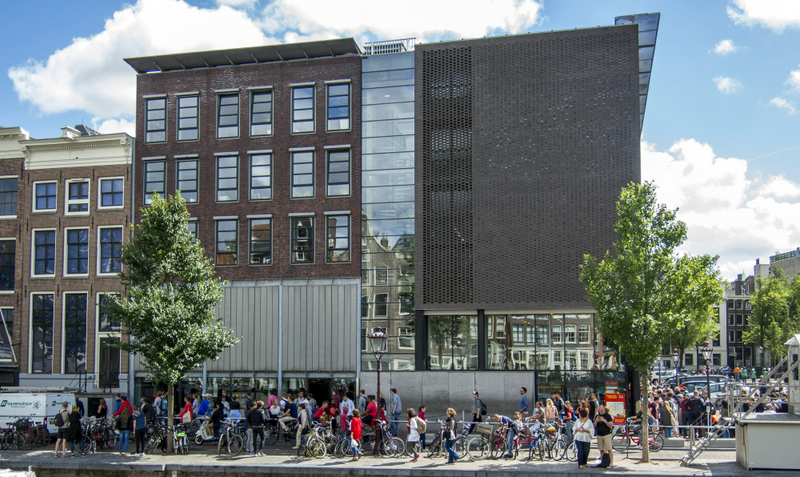
Photo: on the right the new building of the Anne Frank House, one the left the canal house where Mr Frank had his business.
The Anne Frank House
Entry to the house is through a modern reception area, built to deal with the many visitors. Anne herself entered up a narrow creaky staircase. She walked through the front office of her father’s company to the unused part at the back of the canal house.
A filing cabinet stuffed with files and paperwork concealed the entrance to the back house. This secret door to the hiding place is now permanently open. The rooms are without furniture and the windows are blinded. The semi-darkness reflects the atmosphere in the house while the Frank family lived here.
The Nazis removed all furniture after the family had been discovered. Miep Gies, an office worker and helper of the family, found Anne’s diary. After the war, she gave it to Otto Frank, Anne’s father. He was the only member of the family to survive.
Everyday Life in the Secret Annex
Wandering through the rooms, you will ask yourself how it was possible for the family to live in such a confined space for two years. Creaking floorboards and subdued voices show that moving about was clearly audible.
Blinds were down, curtains closed so that neighbours would not see lights or activity in the house. The family were very restricted in their movements: no walking about, no loud talking, no flushing of the toilet during daytime.
The office workers on the floor below mustn’t hear any sound from above. Evenings and weekends were slightly more relaxed, but there was always the fear of being discovered. The family almost became self-sufficient, but this was only possible with the help from friends outside.
Anne Frank’s Room
Walking through the house, you notice almost uncanny normality such as pencil marks on the wall indicating the growth of Anne and her elder sister Margot. In Anne’s room, you get a glimpse of what she saw every day: posters on the wall, pictures of famous movie stars.
The room is now empty, but two beds and a table crammed the space. Anne had to share this room with middle-aged Fritz Pfeffer. She did not get on with him and they often quarreled especially about the bedroom table. Anne wanted to sit there and write entries in her diary.
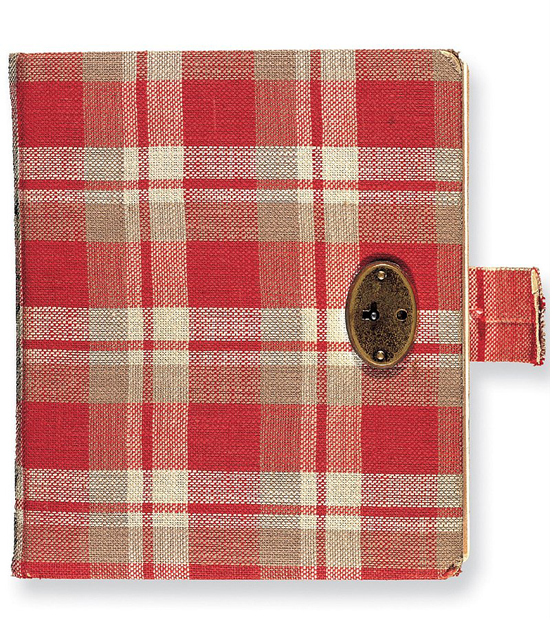
Anne Frank’s Diary
The red-checkered diary, a present on Anne’s thirteenth birthday, is on permanent display in the diary exhibition room, as well as the second and third diary, the Verhaaltjesboek (Tales from the secret Annex) and the Mooie Zinnenboek (beautiful sentences book).
You will see a rotating selection of forty brittle loose sheets of the reworked novel version of her diary. Anne started working on this diary-novel after listening to a radio broadcast. The Secretary of Education and Science in exile urged people to keep letters and diaries.
The aim was to publish them after the war as valuable war documentation. In May 1944, Anne started reworking her diary into a novel. The journal as we know it today is a combination of the original diary and the novel-to-be.
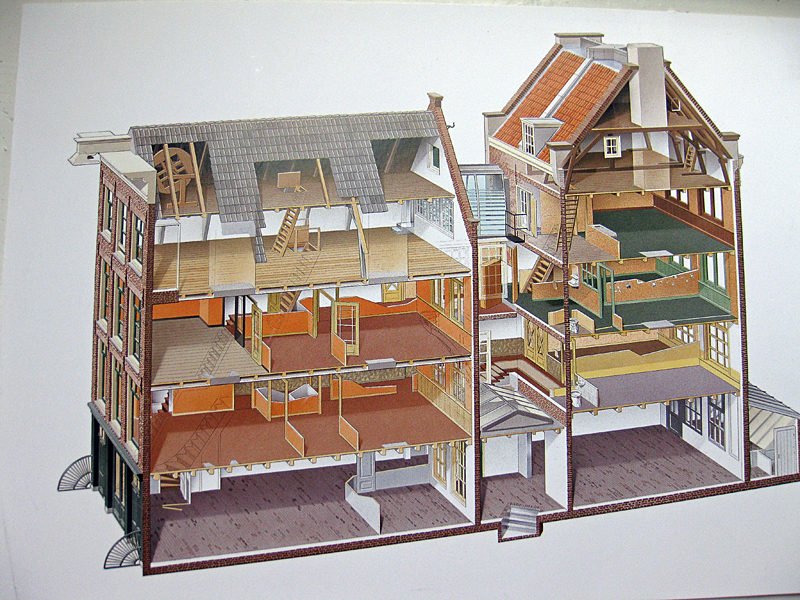
Anne Frank House Scale Model
The scale model clearly shows that the house at the Prinsengracht 267, where the Frank family was in hiding consists of two parts. On the left Otto Frank’s office which overlooked the canal and the street. At the back is a second house known as the Achterhuis (achter meaning back and huis meaning house). The Frank family was hiding from the Nazis in the two top floors of the achterhuis.
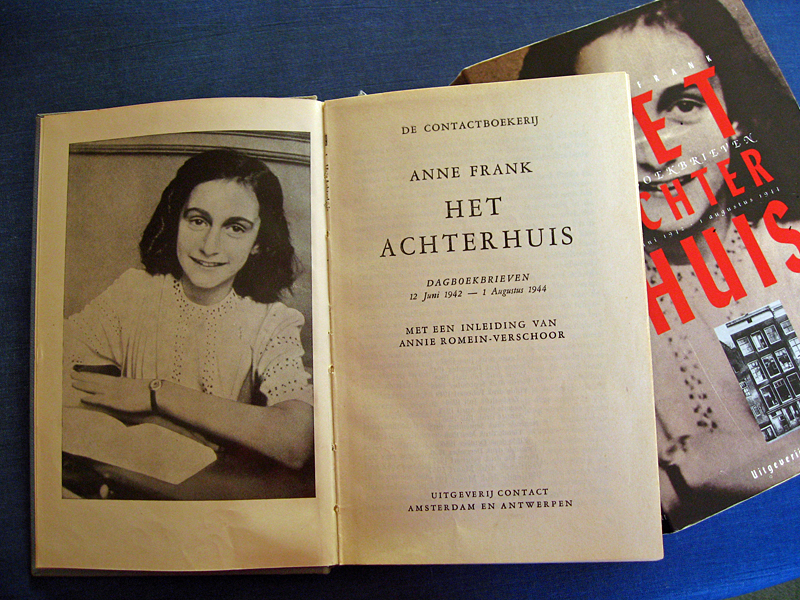
Publication of Het Achterhuis
Anne wrote her diary in Dutch using occasionally German and English words. The Frank family moved to the Netherlands when Anne was four years old. She went to School in Amsterdam and had to learn Dutch which became her first language. The diary was first published in 1947 and has been translated into more than seventy languages.
Anne used the real names for all the people who were in hiding. Otto Frank edited the diary before publication. The Frank family kept their real names: Otto (father), Edith (mother), Margot (daughter) and Anne. He choose pseudonyms for the other people who were in hiding and the people who helped them survive.
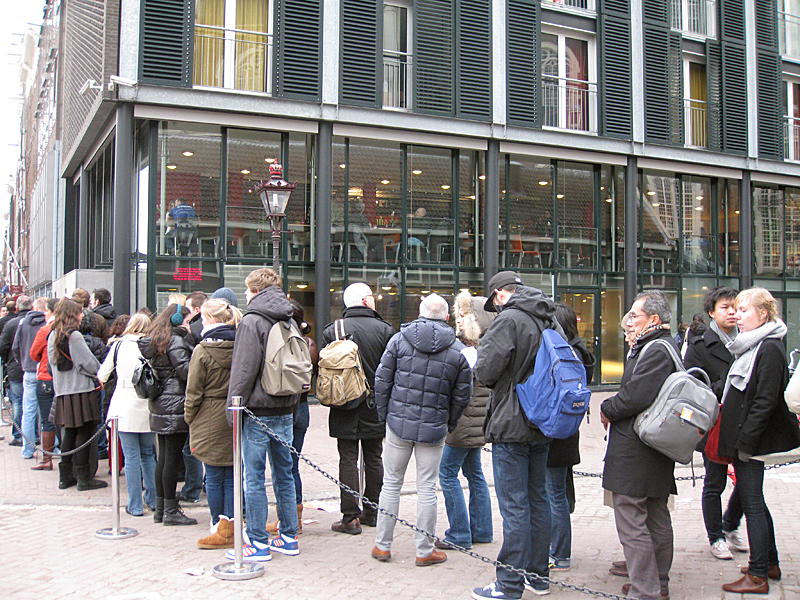
Photo: The long waiting lines are history because tickets with a time slot can be bought online only
Buying Tickets
Entry to the Anne Frank House is only with an online ticket and a time slot. Tickets can only be booked via the Anne Frank House website. Every Tuesday from 10:00 onward, you can book tickets for a visit six weeks later. You can opt for a museum visit only or a museum visit with an introductory programme. You cannot buy tickets at the door. Payments in the museum is by credit or debit card.only.
Getting there
Address: Anne Frank House, Prinsengracht 263-267, Amsterdam
Entrance to the museum is at Westermarkt 20
Opening hours: daily 09.00 – 22.00
Next article: Rijksmuseum Home to Rembrandt’s Night Watch
Previous article: Amsterdam Cat Museum;:Het Kattenkabinet
photos: Albert van den Boomen, Marianne Crone and Wiki Commons


